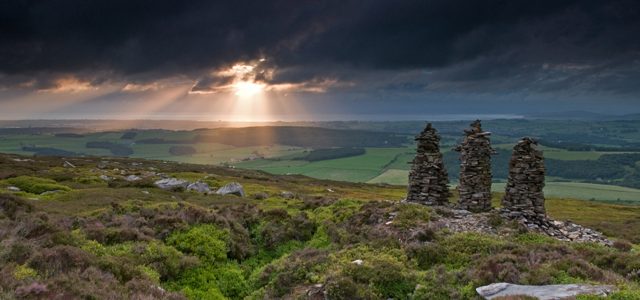
The Wyre Valley & Abbeystead:
Exploring Western Bowland
Western Bowland has some of the finest upland scenery in the region but in times of heightened eco-concern, the estate management is playing a key role, writes historian and fell walker Andrew Stachulski
To many of its adherents and visitors, the Hodder Valley will always be the heart of the Forest of Bowland. Yet the western aspect cuts a fine figure, as seen by travellers along the M6 between Preston and Lancaster or the main West Coast railway, and access is easy from this side. It deserves more recognition.
From here, Bowland is revealed in a sequence of attractive fells and valleys – the vale of Chipping with Beacon Fell, the splendid ridge from Parlick to Fair Snape, Hawthornthwaite Fell and the pleasing greenery of the Wyre Valley. Further north, the massive, sweeping slopes of Ward’s Stone increasingly dominate the scene, rising to the Wyre-Lune watershed, which effectively marks the limit of Western Bowland. You can access this part of the Area of Outstanding Natural Beauty (AONB) from junction 33 on the M6, from Chipping or Garstang, or by taking minor roads leading west from the Trough of Bowland road.
Wainwright considered the Wyre as Bowland’s most important river, and while not all would agree, there is no denying its attractions. Especially the tree-lined fringe of the Marshaw Wyre, encountered along the Trough road, is a delightful spot to coax you out of your car. The other branch, the Tarnbrook Wyre, has its birth high on Ward’s Stone, the Wyre Way, now a recognised trail, allows you to explore the river from Fleetwood and Knott End, tides permitting, to Abbeystead Reservoir, with a final, high loop combining the Marshaw and Tarnbrook branches. To the west, the boundary of the Bowland AONB actually lies between the villages of Abbeystead and Dolphinholme – the very popular Nicky Nook, officially Grizedale, needs little introduction, lying close to Scorton and the M6 although it lies outside the official AONB boundary. For a small expense of effort, this walkers’ circuit of about four miles offers excellent views (www.gps-routes.co.uk).
Hawthornthwaite Fell, long out of bounds, is now accessible, the best way up being from the Trough road, via an access track just north-west of Tower Lodge. Though not a spectacular fell in itself, it offers a wonderful view across Morecambe Bay.
For those visiting from central Lancashire and points south, the distance may incline you to consider accommodation in Wyresdale, allowing a more leisurely exploration. Dolphinholme offers more than one possible stopping point, and the Fleece Inn also offers first-rate food.
Further East, the road passes through Abbeystead, with the grounds of Abbeystead House tucked away out of sight. This splendid 19th century building, originally a shooting lodge for the Earl of Sefton (1886), was acquired by the trustees of the Grosvenor Estate, headed by the Duke of Westminster, in 1980. The Abbeystead Estate is responsible for land management of a significant area of the AONB. More than two thirds of the estate is a Site of Special Scientific Interest (SSSI) and a Special Protection Area (SPA), reflecting the rare habitat, flora and fauna of this area-including some of the UK’s rarest birds. Curlew and lapwing, now on the red list of endangered species, are found in numbers here but emphasises the major decline in many bird populations during our lifetimes.
In these days of heightened eco-concern, the estate management here is playing a key role. The restoration of moorland peat and associated sphagnum moss both benefits the local biodiversity and has broader environmental benefits. Thus the peat restoration has led to a 60 per cent reduction in local CO2 emissions, and decreased water runoff – reducing the flooding risk downstream.
Abbeystead village is the main centre of population on the estate, which has about 300 residents overall. In this age of the internet, the estate boasts a highly efficient broadband service covering the wider area, about 3,000 homes in all.
In summary, these are no sleepy, timeless moors but rather a living symbol of the complexities of modern life. For the visitor, though, the first impression will be some of the finest upland scenery that North West England has to offer, and you will find much to explore.
Andrew Stachulski is joint author, with Helen Shaw, of ‘The Forest of Bowland’ published by Merlin Unwin at £14.99

